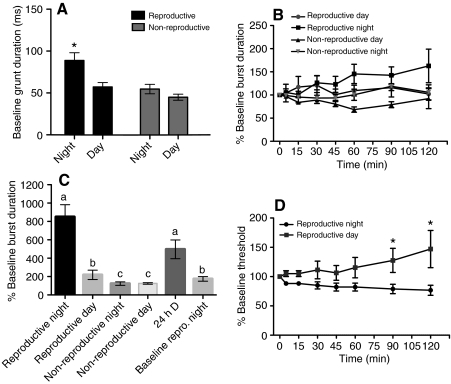Fig. 3.
Diel and seasonal variation in fictive calls. (A) A night versus day comparison of mean baseline grunt duration in reproductive and non-reproductive males. Asterisk, reproductive males at night have a significantly higher fictive grunt duration than all other groups (see text). (B) Call duration change over 120 min with 40 stimulus trains at each recording. Reproductive males were housed on a 14 h L:10 h D cycle, and non-reproductive in 10 h L:14 h D cycle (all N=3). There was a significant, overall effect of reproductive state (see text). (C) 100 stimulus trains (1 s–1) at baseline in reproductive males at night versus 100 stimulus trains at 120 min in all groups (N=5 for reproductive night; 3 each for reproductive day, non-reproductive night and non-reproductive day; 6 each for 24 h D and baseline reproductive night). Letters (a, b, c) denote significant differences (see text). (D) The call threshold stimulus current significantly decreases in reproductive (14 h L:10 h D) males at night, but rises during the day (asterisks indicate significant differences, see text).

